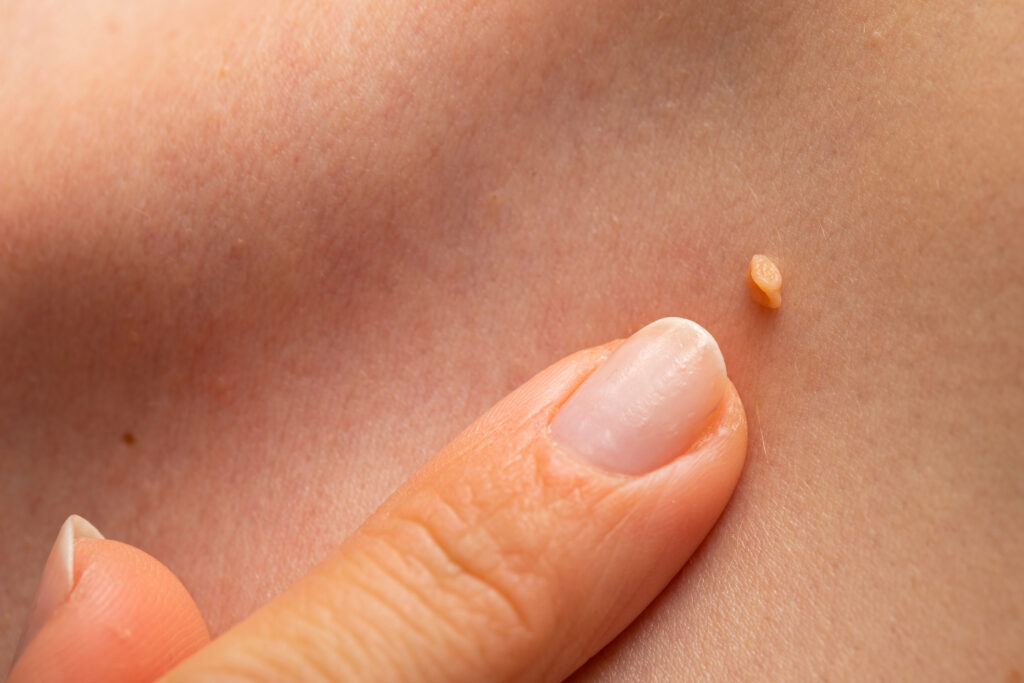Myths About Warts

Warts are very common, affecting at least 20 percent of the population worldwide. Even though they’re something most people are likely to encounter, however, warts are still misunderstood. We would like to take this opportunity to clear up some persistent myths and offer some facts about warts.
- Myth: Warts are caused by toads.
- Fact: Warts are caused by a virus, not an amphibian. There are more than 100 types of human papillomavirus (HPV), and the different types cause different types of warts. Warts are spread by direct or indirect contact, either with a part of your body that has warts, or with another person.
- Myth: Warts won’t spread to other people.
- Fact: As stated above, warts are spread through contact, and they are quite contagious. They can be spread through direct contact, but they can also be spread indirectly, through contact with contaminated items like gym mats, gym equipment, shared floors, and improperly cleaned nail salon equipment.
- Myth Warts cannot be successfully treated.
- Fact: Some people give up when their warts do not respond to the first treatment, but it is normal for them to sometimes require multiple treatments. There are many options for removing warts, including topical treatments, cutting them off, freezing them off, or using laser treatments or chemical peels.
- Myth: There’s no way to prevent warts.
- Fact: Frequent handwashing can help prevent warts, and so can good skin care and overall hygiene. Don’t pick at warts, wipe down any shared equipment, and use good razor hygiene to prevent re-exposure and spread of warts in hair-bearing areas.
- Myth: All warts are the same.
- Fact: With all the different strains of HPV, there are many different types of warts. The types of warts you’re most likely to encounter are common warts, usually found on the hands, elbows, and knees, plantar warts on the feet, flat warts on sun-exposed areas like the face and the backs of the hands, filiform warts, which are thread-like and spiky and grow on the face, and genital warts. Regardless of the type of warts, the same treatments can be used.
- Myth: Genital warts aren’t warts.
- Fact: Warts on any part of the body are still warts, caused by HPV. Genital warts are spread by sexual contact, including oral sex and other types of intimate touching. They’re highly contagious, so avoid sexual contact when you have a wart outbreak and practice safe sex even when you don’t.
- Myth: Warts are a sign of cancer.
- Fact: Warts are typically benign growths. What confuses people is that HPV, the virus that causes warts, has strains that cause various cancers, like cervical cancer. The strains that cause warts are not the same strains that cause cancer, though if you have genital warts you should be checked for the HPV that can cause cancer.
- Myth: Warts won’t grow back.
- Fact: In some cases, warts grow back. HPV can remain in the body, dormant, to resurface later, sometimes months or even years after the initial warts have been removed.
- Myth: Warts have roots and sometimes seeds.
- Fact: Warts are the result of rapid growth of the skin’s top layer, and if they seem to extend deeper, it is just because they are displacing other layers. The black “seeds” you might see within a wart are actually blood vessels.
- Myth Warts will eventually go away on their own.
- Fact: Sometimes warts resolve on their own without treatment, but they will likely recur because HPV infections cannot currently be cured.
If you’re looking for a dermatologist, Swinyer-Woseth Dermatology is committed to providing superior, professional hair and skin care in a manner that’s practical, efficient, and compassionate. With over 30 years of experience providing dermatological services in Salt Lake City, we provide a variety of services, from cosmetic skincare to treatment for skin cancer. Our team of board-certified dermatologists and licensed cosmetic service providers are here to provide you the care you need in a comfortable, professional atmosphere. Call (801) 682-4715 or contact us through our website.
